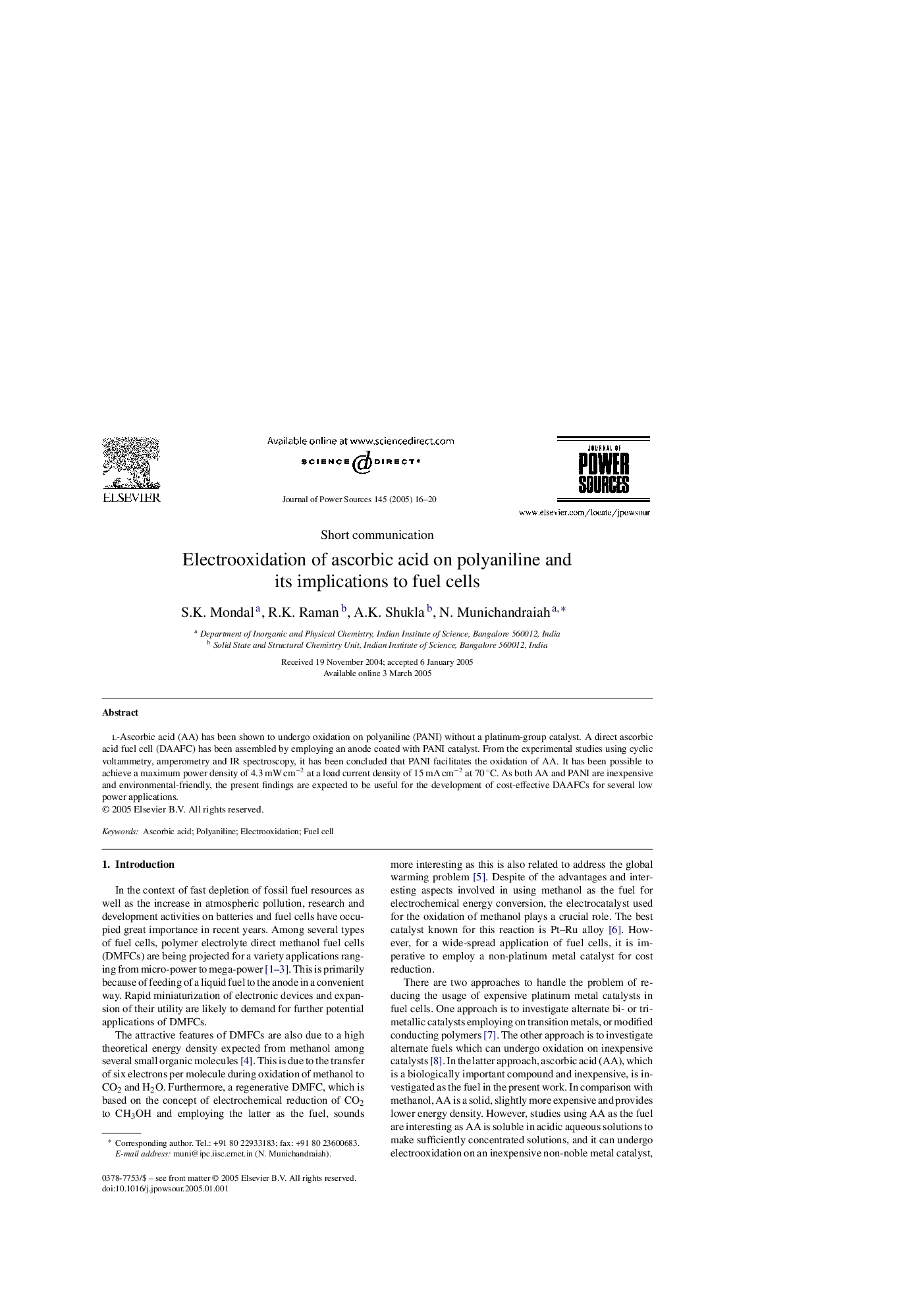| Article ID | Journal | Published Year | Pages | File Type |
|---|---|---|---|---|
| 10568042 | Journal of Power Sources | 2005 | 5 Pages |
Abstract
l-Ascorbic acid (AA) has been shown to undergo oxidation on polyaniline (PANI) without a platinum-group catalyst. A direct ascorbic acid fuel cell (DAAFC) has been assembled by employing an anode coated with PANI catalyst. From the experimental studies using cyclic voltammetry, amperometry and IR spectroscopy, it has been concluded that PANI facilitates the oxidation of AA. It has been possible to achieve a maximum power density of 4.3 mW cmâ2 at a load current density of 15 mA cmâ2 at 70 °C. As both AA and PANI are inexpensive and environmental-friendly, the present findings are expected to be useful for the development of cost-effective DAAFCs for several low power applications.
Related Topics
Physical Sciences and Engineering
Chemistry
Electrochemistry
Authors
S.K. Mondal, R.K. Raman, A.K. Shukla, N. Munichandraiah,
